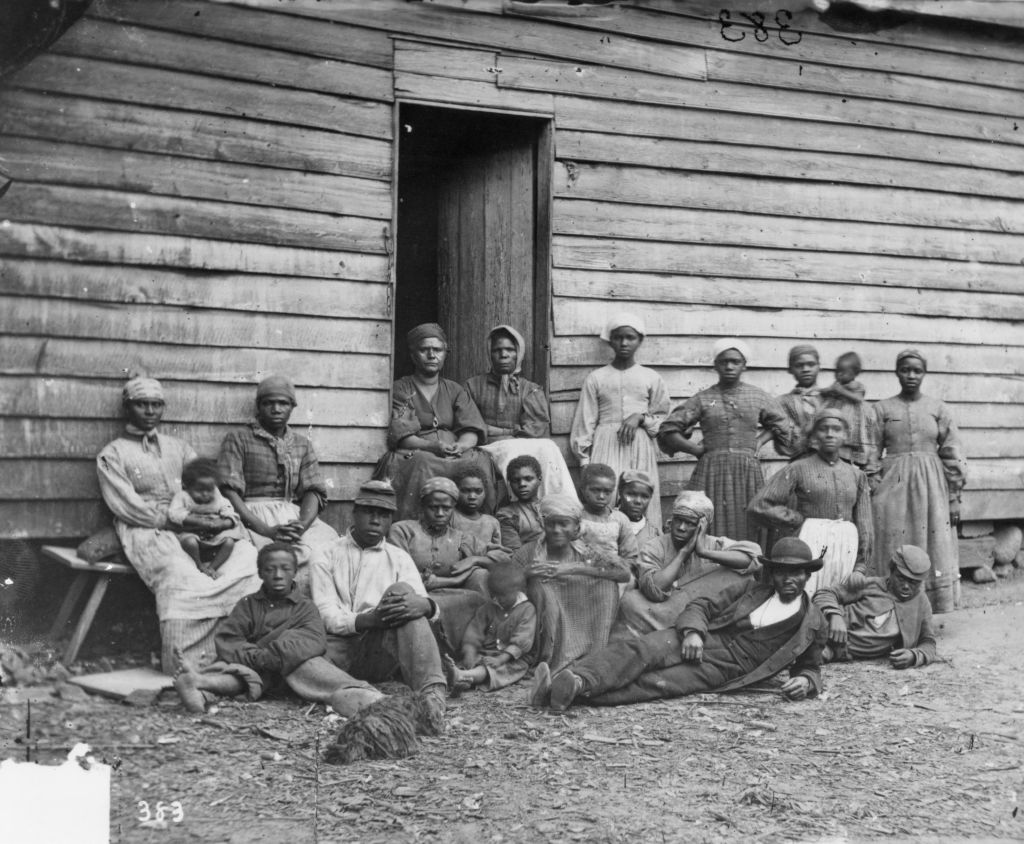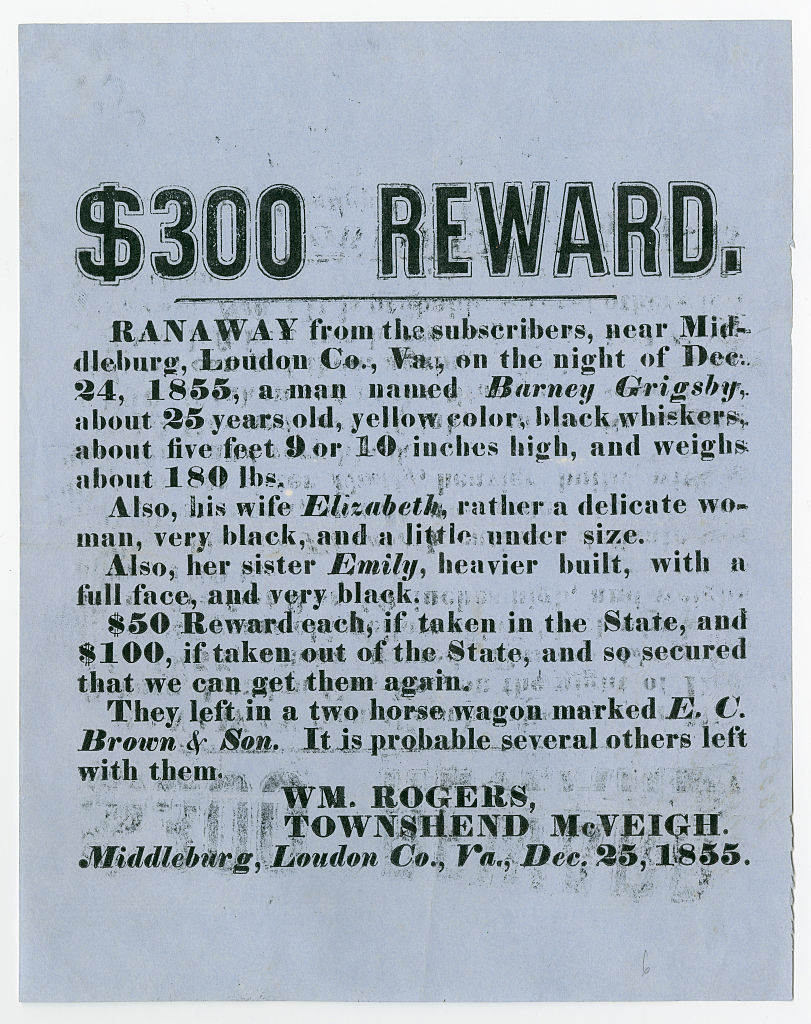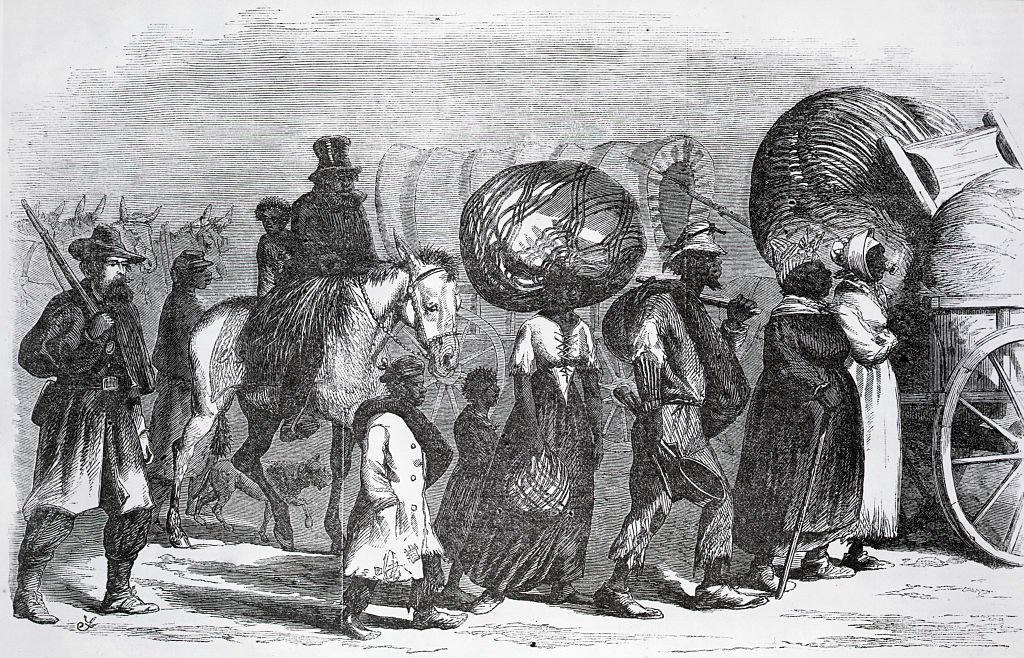
Source: MPI / Getty
When Americans think of Christmas, it usually involves positive thoughts of family, friendship and love.
But as we immerse ourselves in the holiday spirit, it’s important to reflect on the history of Christmas from perspectives that have been lost in time.
One of American history’s most poignant and overlooked aspects is Christmas for slaves on the plantation.
What was Christmas like for slaves in America? In this piece, we will take a glimpse into the harsh realities of slave life during the holiday season, which to many symbolizes, love, freedom and togetherness, but not for slaves.
During America’s antebellum period (1812-1861), large slaveholding states like Alabama, Louisiana and Arkansas became the first states to declare Christmas a state holiday. Christmas traditions like giving gifts, singing carols and decorating homes also began during this time.
It’s worth noting that the antebellum South was one of the most tumultuous periods for Black people in America.
During the holiday season, some enslaved workers got their longest break of the year, even sometimes being granted the privilege to travel to see family, but that solely depended on whether their slave master was generous or not. Slave owners recorded many stories about allowing their slaves to enjoy the festivities of the holidays, which some historians called Christmas propaganda.
Many slaves spent the holidays worrying about being sold, whipped or mistreated as they did any other day of the year.
In the book Yuletide in Dixie, author and historian Robert E. May explores the Christmas traditions in the antebellum South before, during and after the American Civil War.

Source: Chicago History Museum / Getty
In his book, May explains that many enslaved Americans enjoyed a brief respite from hard labor during the Christmas season, but it also created a great opportunity for slaves to flee in search of freedom.
Newspaper clippings of slaves on the run often popped up in publications around the holiday season.
In an interview with TIME, Robert E. May explained that enslaved people were also often rented out on one-year contracts and often allowed to return home to their original master on Christmas. Only to then be rented out again on Jan. 1 and taken from their family for long periods. Slaves often referred to New Year’s Day as “heartbreak day” because of the strong possibility they could be sold to a new employer and never see their families again. Getting a new slave owner was something many slaves feared tremendously because of the abuse they might suffer under the thumb of their new master. After getting a small Christmas break from the persecution of Slave owners, enslaved Blacks were put right back on the auction block at the top of the year to be sold to the highest bidder.

Source: Bettmann / Getty
Slaves were also often gifted as Christmas presents to neighboring slave owners as holiday gestures. Former slave Louis Hughes wrote in his autobiography entitled Thirty Years a Slave, that he was even gifted to his slave master’s wife on Christmas Eve.
Exploring Christmas through the lens of American slavery helps us understand the early experiences of Black people in America during the holidays.
Christmas isn’t just about gifts, it’s also about reflection. By acknowledging the past, we empower ourselves to build a more compassionate future. What’s better than compassion and understanding during the holidays?
SEE ALSO:
A Comprehensive Guide To Buying Black During The Holidays
Environmental Racism: How Racist Policies Around Climate Affect Black People
The post What Was Christmas Like For Slaves In America? appeared first on NewsOne.
What Was Christmas Like For Slaves In America? was originally published on newsone.com











